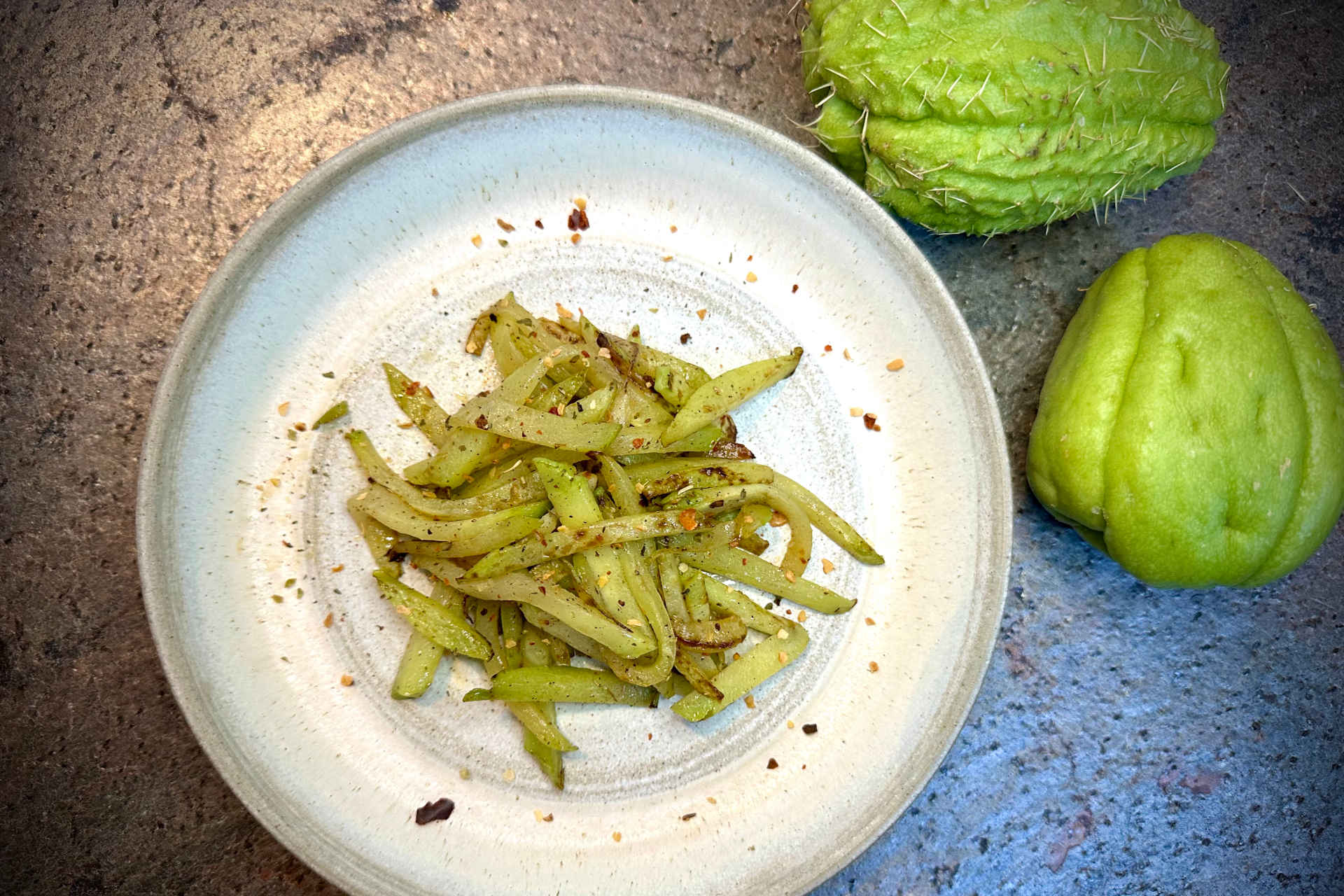Chayote – The Exotic Vegetable Pear
A Simple Recipe for a Delicious Side Dish or Meat Alternative
Chayote, also known as vegetable pear or mirliton, is a versatile and healthy vegetable from the squash family. This exotic fruit from Mexico has found its place in international kitchens and delights with a flavor reminiscent of a mix between kohlrabi, cucumber, and potato.
What Makes Chayote Special?
Aside from its versatility – whether raw in salads, cooked as a side dish, or sautéed in vegetable stir-fries – chayote boasts valuable nutrients like vitamins B3, B5, C, and E. Whether used as a light meat substitute or a refined ingredient in pasta dishes, this recipe demonstrates how easy it is to prepare chayote and unlock its full flavor potential. Let’s dive into the world of this unique vegetable!
Chayote, also called vegetable pear, is a true multitasker. Originally from Mexico, it is now cultivated in many tropical and subtropical regions. Its mildly sweet taste and crunchy texture make it the perfect base for creative recipes. But before you get started, here are a few tips:
Do You Need to Peel Chayote?
The skin is technically edible, but many prefer to remove it. The sticky sap under the skin can easily be rinsed off with running water. Using a julienne slicer or a sharp knife, the flesh can be cut into fine strips – perfect for our recipe.
Whether as a light side dish, a flavorful addition to pasta, or a creative meat alternative, sautéed chayote is not only quick to prepare but also brings an extra portion of taste and health to the table. Give it a try and be convinced!
How to Cook Chayote
Quarter the chayote. Remove and discard the seed from the center. Slice into 1/4-inch pieces. Bring a large pot of salted water to a boil, add the chayote, and cook for 5 minutes.
How to Peel Chayote
Chayote can be used both raw and cooked. Before eating, the thin skin should be removed. When peeling, sticky sap may ooze out, so it’s recommended to peel the chayote under running water. Then halve the fruit lengthwise and remove the seed.
Can You Eat Chayote Raw or Cooked?
Although botanically classified as a fruit, chayote squash is prepared like a vegetable. Every part of the squash is edible, including the skin, flesh, and seeds. You can eat it raw or cooked. Raw, it’s a great addition to smoothies, coleslaw, and salads.
What Does Chayote Taste Like?
The fruit of the chayote has a slightly sweet flavor. If you want to prepare it for stuffing, it’s best to pre-cook the fruit with the skin on and then stuff it. Alternatively, you can fill the raw halves with seasoned meat or shrimp and bake them in the oven.
Preparation time: 20 minutes

INGREDIENTS
- 2 chayotes (peeled and cut into fine julienne)
- 1 tbsp olive oil
- 1/2 tsp Aglio & Peperoncino seasoning blend (optional)
- 1/2 tsp Amore – Pesce, Pollo & Vitello seasoning blend (optional)
- Salt and pepper to taste
PREPARATION
- Preparation: Peel the chayotes under running water to remove the sticky sap. Cut the flesh into fine julienne strips.
- Sautéing: Heat olive oil in a large skillet. Add the julienned chayote and sauté over medium heat until golden brown, about 5-7 minutes.
- Seasoning: Season with salt, pepper, and the seasoning blends. Stir well to ensure the spices are evenly distributed.
- Serving: Serve the sautéed chayote as a side dish, a topping for pasta dishes, or a meat substitute in vegetarian meals. It also pairs wonderfully with potatoes or other vegetable dishes.
Chayote is not only delicious but also a real all-rounder in the kitchen. You can also enjoy it raw in salads, cooked, or even stuffed and baked. Experiment with different spices and accompaniments – the possibilities are endless!